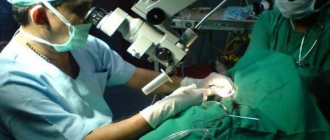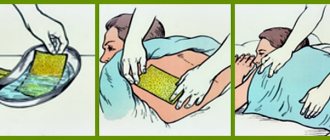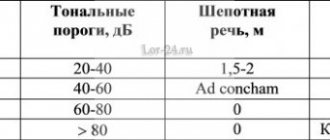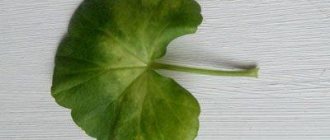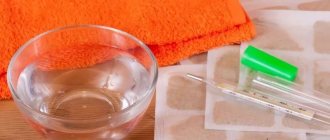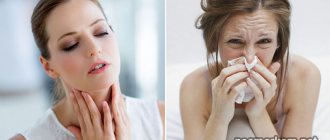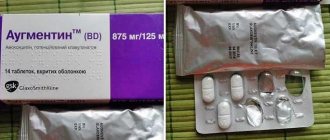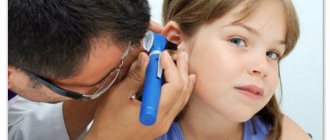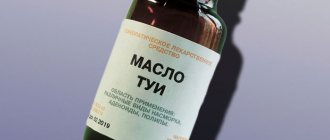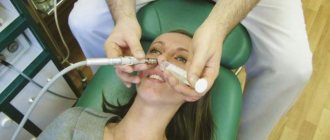Ear diseases are often diagnosed in childhood. In most cases, they are a consequence of inflammatory pathologies of the upper respiratory tract. For the treatment of ear diseases, complex therapy is recommended. This is the only way to avoid the transition of acute pathology to a chronic form. In addition to medications and physiotherapeutic procedures, otolaryngologists recommend massage of the eardrum.
By changing the pressure in the middle ear, the process of transmitting signals to the brain improves. With the help of massage you can speed up the healing process. Impact on certain points improves microcirculation and eliminates inflammation.
Indications for implementation
Inflammatory pathologies of the auditory analyzer lead to impaired mobility of the eardrum. As a result, hearing loss may develop. To prevent this from happening, pneumomassage of the eardrum is performed. Indications for this procedure are the following conditions:
- Inflammation of the middle ear in the initial stage - otitis media.
- The recovery period after suffering pathologies of the hearing organ.
- Catarrhal inflammation of the auditory tube - eustachitis.
- Chronic otitis media.
- Sensorineural hearing loss.
- Adhesive processes in the middle ear cavity – adhesive otitis media.
In addition, massage is recommended for Meniere's disease and dizziness caused by vascular pathologies.
You can perform the massage yourself without special equipment.
Progress of pneumomassage
Air pneumomassage can be done either by hardware or manually. The choice of technique depends on the equipment of the otolaryngologist’s office and the severity of the patient’s pathology.
Manual technique
The so-called manual technique is based on the use of a Politzer balloon, used to blow out the auditory tubes. When performing pneumomassage of the eardrum, the tip of a rubber tube is inserted into the ear canal, and the doctor presses the bulb to pump air masses into the cavity of the hearing organ.
- The specialist selects a sterile tip that fits the patient’s ear canal.
- A rubber O-ring is placed on the selected funnel to ensure a tight seal.
- The tip is attached to a rubber tube extending from the Politzer balloon.
- The tip is inserted into the patient's ear canal, then the otolaryngologist gently presses the bulb, forcing air into his ear and monitoring the comfort of the procedure.
Contraindications to massage
There are contraindications for pneumatic massage. It is prohibited to perform it during an active inflammatory process. Especially if it is accompanied by purulent exudate. Another contraindication is atrophic otitis media. Changing the pressure in the ear cavity will only aggravate the destructive process. Massage cannot be performed if a person has suffered barotrauma. This disease is caused by changes in atmospheric pressure. People who engage in mountain climbing, dive deep under water, as well as pilots are susceptible to barotrauma.
Preparation for the procedure
Before performing pneumomassage, the attending specialist analyzes the characteristics of the patient’s body and determines the stage of the disease. No special preparation is required from the patient before the procedure. The only thing that needs to be done is to thoroughly clean the ear canal of wax.
To carry out hygienic manipulation, take an ear stick and hydrogen peroxide. Moisten the stick in the medicine and carefully roll it several times in the ear canal, without pushing it deep inside. If there is a large amount of sulfur, this procedure must be repeated.
Types of massage
There are several types of eardrum massage. The classification is based on the technique of performing the procedure. According to this, there are:
Treatment of chronic otitis in adults
- Manual massage. You can do it yourself.
- Massage with a pneumatic massager. This device consists of a Siegle funnel and a Politzer balloon.
- Hardware massage. This is done using a special device called APMU “Compressor”.
Depending on the mechanism of action on the eardrum, compression, air and infrasonic vacuum massage are distinguished. The first one helps to normalize vascular tone and blood flow. Air massage improves the functional state of the eardrum. Infrasound vacuum technology allows you to normalize the pressure in the middle ear cavity and eliminate signs of inflammation.
Contraindications
This physiotherapeutic procedure has a number of specific contraindications, which doctors must take into account when prescribing pneumomassage. Among them are:
- Acute period of the inflammatory process. In this case, the procedure may lead to complications.
- Purulent inflammatory process. If you ignore this prohibition, purulent exudate can enter the area of the temporal bone or the membranes of the brain.
- Barotrauma of the middle ear. It often happens to climbers, divers due to changes in atmospheric pressure, and also after flying on an airplane.
- Atrophied condition of the eardrum.
To avoid complications and worsening the course of the disease, you should remember about contraindications, since ignoring them can negatively affect your health.
Execution technique
Vibromassage does not require special preparation. The only condition for its implementation is to clean the ear canal from wax. The course of treatment procedures for inflammatory diseases is 10 sessions. Gradually, the impact on the eardrum lengthens. The first session lasts about 3 minutes. Pressure changes cause the eardrum and the auditory tube muscle to move. As a result, blood flow improves and congestion decreases. The technique of the procedure depends on its type.
Manual massage is performed as follows:
- Place the palm so that the thumbs are behind the ears, and the rest cover the external auditory canal. Perform circular movements until a feeling of heat occurs.
- Lightly pull your earlobes down with two fingers.
- Rotate your ears clockwise and then counterclockwise.
- Pull the hearing organ alternately - back, to the side and forward.
- Grasp the central part of the ear with your index finger and thumb and pull first up and then down.
It is worth performing each exercise at least 15 times. The course of treatment for otitis is 7–8 days. To enhance the effect, it is recommended to massage the forehead and temples.
Performing vibration massage in a hospital
What is pneumomassage?
Pneumomassage of the eardrum is understood as a complex therapeutic effect using low and high pressure flows on the hearing organs. There are three types of this procedure: infrasonic, compression and with additional mechanical and electrical effects. Infrasound vacuum type of ear treatment normalizes pressure and eliminates inflammation on tissue surfaces. The compression type of procedure stabilizes blood circulation and increases vascular tone. Treatment with a method with additional mechanical and electrical effects makes the eardrum more mobile and restores its functions. After any type of procedure, tissue metabolism improves, blood circulation and elasticity of the eardrum are normalized, inflammatory processes are eliminated and adhesions and scars disappear.
Applications of hand massager
To perform pneumomassage of the eardrum, a special manual device is used. The technique of the procedure involves blocking the ear canals and pumping air. For this purpose, perform 20 to 30 presses of the rubber bulb.
A similar procedure can be carried out at home, even in the absence of a manual apparatus. Palms are used instead. They should be pressed tightly against the ear canal and made several quick movements. In this case, the pressure created between the eardrum by the palms causes the muscles to move.
Pneumomassage in the clinic
The procedure is carried out in almost all cases (except for manual self-massage) at medical institutions (district clinics, hospitals, private clinics, etc.). Manual massage using a pneumatic massager is performed by an ENT doctor during the appointment, and hardware types of manipulation are performed in treatment rooms.
Before starting a manual massage using a Politzer balloon, disinfect the funnel and ring with alcohol. Next, they are inserted into the ear canal and squeezing movements are made with the pear. Thus, air is pumped into the ear, due to which pneumomassage occurs. Typically, the doctor applies 20-30 compressions per appointment, and it is important to control their strength to avoid damage to the eardrum. The number of procedures is prescribed depending on the course of the disease, on average 10 sessions.
Hardware massage using the Compressor APMU is performed by nursing staff. Disinfected and washed tube tips are inserted into the ears, the device is turned on and the intensity of the effect is adjusted, and it is turned off automatically. Upon completion of the pneumomassage, the tips are removed from the ears. The course of therapy includes 10 procedures, which are carried out daily or every other day. The intensity of the effect increases with each dose.
If during the procedure the patient feels discomfort or deterioration in health, this should be immediately reported to the specialist who controls the process.
Performed in a hospital
To perform vibration massage in a hospital setting, a special device is required. The patient is seated next to a table on which an electrical device is located. The amplitude and frequency of oscillatory movements, as well as the duration of the procedure, are determined on the device. One end of the tube is connected to the device, and the other is inserted into the ear canal. If the patient experiences discomfort during the procedure, the doctor adjusts the indicators and the discomfort goes away. After the set time has expired, the device turns off automatically. On average, the procedure lasts about 10 minutes. For effective treatment of inflammatory pathologies, 10 sessions of eardrum massage are recommended.
Hardware treatment is performed in Moscow. Instruments for the procedure are available in almost all otolaryngology departments of hospitals. Hardware treatment is carried out in medical clinics, Dobromed, Triumph Palace Clinic, Medline-Service, etc.
Pneumomassage at home
To get pneumomassage, it is not always necessary to visit an otolaryngologist’s office. The procedure can be carried out independently at home, but only after permission from a specialist: the doctor must make sure that you have no contraindications to it.
- The auditory canal should be thoroughly cleaned of sulfur masses.
- Place your palms firmly on both ears, achieving a complete seal.
- Continuing to press your palms tightly to the ears, you should press on the ears, taking a break of 5-10 seconds between manipulations.
- Press the ears at least 10 times.
As a result of a slight change in pressure inside the ear, the procedure, carried out independently at home, will improve the ventilation of the ENT system, eliminate the feeling of congestion and speed up metabolic processes in the tissues. Course sessions of eardrum massage, which you will do once a day, will serve as an excellent prevention of hearing loss.
Massage devices
A hand-held device for pneumomassage consists of a Politzer balloon, an elastic tube and a Siegle funnel, which allow you to control the pressure. It is placed in the ear canal during the procedure. The Politzer balloon is a rubber bulb through which the doctor pumps air.
Manual vibration massager
The hardware pneumatic massager APMU “Compressor” consists of a large rectangular electronic unit. There is a control panel on one side of the device. There is a “Start” button, frequency and amplitude controls and a timer. The device operates thanks to a variable pressure compressor located inside the unit. In addition to the regulators, the control panel has an output fitting, to which an elastic tube with a special tip (olive) is connected. Instead, you can use a pneumatic Siegle funnel.
The APMU “Compressor” device weighs about 1.5 kg. The kit includes a main unit and 2 tubes, with which you can massage both ears at the same time. The frequency of baropulses ranges from 6 to 26 Hz, the amplitude is 6–20 mm. rt. pillar
Types of massage treatments
To treat diseases of the auditory system, one of three main types of pneumomassage is usually used:
- infrasound;
- compression;
- air.
The infrasonic vacuum massage method is based on washing the middle ear cavity with low-frequency ultrasonic cavitation of bubbles of an antiseptic solution. The procedure lasts only 30 seconds. During treatment, pressure is stabilized and inflammatory processes on the tissue surface are eliminated.
Compression technique is aimed at stabilizing blood circulation and increasing vascular tone using a special device.
Air massage also involves the use of a device of a mechanical or electrical operating principle. They restore the mobility and functioning of the membrane.
Additionally, a classification is used that divides all types of pneumomassage into manual and hardware. Simple massagers are available for use at home, but complex compression massagers can only be used in medical centers.
Simple models include the Delstansha device - the first massager for the treatment of ear diseases. It is made in the form of a pump into which air is pumped by pressing the handle. The change in positive and negative pressure leads to vibrations of the membrane, which restores its mobility and elasticity. Another simple device for pneumomassage consists of a rubber bulb to which an elastic tube is attached. The tube ends with a pneumatic Siegle funnel. Air vibrations occur due to pressing on the pear.
Compression devices consist of an electronic unit with a variable pressure compressor and a control panel equipped with power buttons, regulators of the amplitude and frequency of baropulses. A flexible tube with a soft and rounded tip is inserted into the ear, through which air is supplied.
Preparation for the procedure and basic rules
Before conducting a session, the massage therapist must familiarize himself with the indications, contraindications and medical history. Performing a massage does not require special preparation of the patient, however, it is necessary to thoroughly clean the ear from wax using cotton wool soaked in hydrogen peroxide.
Massage of the eardrum at home or in a medical center is carried out only if you feel well. If the procedure is performed independently, then you must first become familiar with the basic techniques and techniques. If there is pain or discomfort, stop pneumomassage of the eardrums and consult a doctor.
How the session is conducted
Air massage of the eardrum is performed only from a sitting position. During the procedure, the patient should be relaxed and calm. The doctor sets the level of frequency and amplitude of current pulses, as well as the duration of exposure, on the massager panel. One end of the tube is inserted into the ear so that the ear canal is completely closed. The second end is connected to the device. There should be no pain or discomfort during the session, however, if the procedure is accompanied by discomfort, the doctor changes the frequency and amplitude of the baropulses.
The course of treatment for ear diseases consists of 5-10 sessions. The first procedures last no more than 3 minutes, gradually increasing to 10 minutes. Depending on the degree of damage, sessions are carried out every other day or daily.
At home
You can perform pneumomassage of the eardrum yourself only after examination and consultation with a doctor.
How to do a massage: close the ear tightly with your palm, then gently press so that all the air comes out. Hold for 2-3 seconds and release the pressure. Up to 10 presses are performed in one session. For preventive purposes, 1 session is carried out daily, for therapeutic purposes - up to 3.
Another option for a simple study: use your index finger to firmly press the tragus to the ear canal and apply a few quick pressures. In one massage session you can do no more than 10 presses.
Diseases of the auditory system can develop against the background of trauma, infectious diseases, disruption of the endocrine or circulatory system. At an early stage and with timely diagnosis, treatment can consist only of physiotherapy and massage procedures, and in case of more serious damage, medication cannot be avoided. Pneumomassage of the eardrum can be performed both at home and in medical centers. At home, mechanical or manual techniques are usually used, when the effect occurs through finger pressure. Clinics use hardware massage methods: the doctor monitors the frequency and strength of baropulses that create air vibrations. The average massage course consists of 5-10 procedures, which are carried out every day. If necessary, additional supportive or preventive procedures are prescribed.
Benefits of the procedure
Pneumomassage is used as an addition to the complex treatment of chronic and adhesive otitis media. It has the following beneficial properties:
- It moves the eardrum, thereby improving its elasticity.
- Helps strengthen the muscles of the middle ear.
- It moves the auditory ossicles - the hammer, incus and stirrup.
- Promotes stretching of tissue forming adhesions.
- Prevents the formation of scars after surgical treatment.
- Improves the outflow of serous fluid from the tympanic cavity during inflammation.
- Reduces tissue swelling.
Eardrum massage is indicated for the treatment of uncomplicated inflammatory processes of the middle and inner ear. It is used not only as therapy, but also for the purposes of rehabilitation and prevention of pathologies.
When is the procedure necessary?
The procedure is prescribed not only for otitis media, but also for ringing in the ears, noise in the head, and hearing loss. These diseases have different origins. And the impact required is special for each case.
Doctors distinguish between otitis media, internal and external otitis. Massage is effective only for the first type of disease. This is the most common type (80% of the total number of cases).
The structure of the middle ear is a sound-conducting cavity. As a result of inflammation, the patient initially feels congestion. When fluid enters the cavity, otitis media develops. Congestion gives way to pain, and hearing loss occurs.
In this case, the procedure will allow:
- reduce pain;
- relieve inflammation;
- reduce swelling;
- improve blood circulation in the affected area;
- get rid of congestion.
But massage is not the main therapeutic agent: it is prescribed as an additional.
Doctors prescribe middle ear massage for:
- accumulation of fluid in the tympanic cavity;
- absence of discharge of pus during otitis media;
- recent inflammation of the middle ear;
- inflammation of the eustachian tube.
Otolaryngologists often prescribe the procedure to strengthen the immune system or for prolonged rhinitis.
What does eardrum massage mean?
Pneumatic massage of the eardrum applies air flow to the ear using repeated vibrations.
This has a positive effect on the elasticity of the membrane, thereby gradually returning hearing to normal. Cyclic vibrations restore muscle tone. This effect is provided by a special device for massaging the eardrum. Eardrum massage is performed not only as the main treatment for ear diseases, but also for a preventive effect. This procedure has many positive qualities:
- Restores the elasticity of the membrane.
- Helps normalize the functions of the small bones of the inner ear.
- Tones the auditory muscles.
- Positively affects blood circulation in the ear.
- Treats inflammation of the hearing organ.
- Improves fluid circulation in sections of the ear apparatus.
- Promotes healing of adhesions and scars on the eardrum.
How does pneumomassage work?
With air (vacuum) massage, the massaging effect is created by alternating high and low air pressure.
Variable pressure is created using a special apparatus, mechanical or electrical, as well as a Politzer cylinder, which allows air to be pumped.
Pneumomassage of the eardrum involves stimulating its vibrations. The vibrational movements of the membrane are transmitted to the muscle that stretches it, thereby increasing muscle tone.
The simplest procedure for self-massage of the eardrum can be carried out at home without additional equipment; air is pumped through the movements of the palms.
The benefits and effect of pneumomassage
Pneumomassage of the eardrum has a complex effect:
- increases the elasticity and mobility of the eardrum;
- strengthens the muscles associated with it;
- increases the mobility of the auditory ossicles, preventing the development of hearing loss;
- prevents the formation of scars and promotes stretching of adhesions;
- promotes the resorption of inflammation, the outflow of serous fluid accumulated in the tympanic cavity, and reduces the risk of stagnation.
